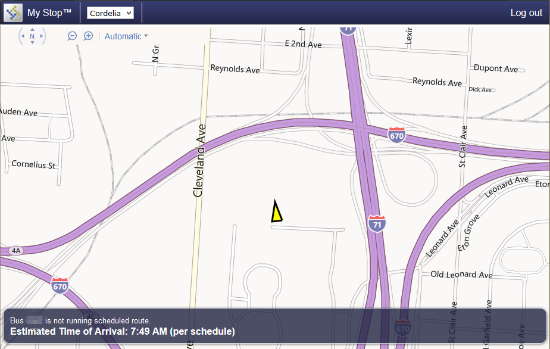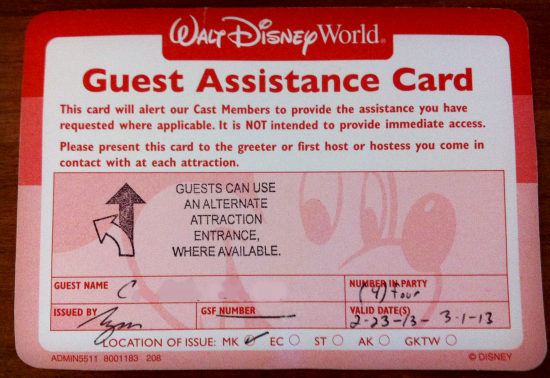When we last left this saga with Columbus City Schools taking three hours to bring our daughters home with no notice, we had emailed the superintendent and the school board about what happened to our family last Friday. The superintendent had replied to the email agreeing that the incident was inexcusable and let us know he had asked the deputy superintendent and director of transportation to investigate and follow up with us.
The next day, as I was driving to pick the kids up from school (Mira had asked that I pick them up that day, saying she was still a little nervous to ride the bus home for fear of being on it for another three hours), my phone rang. I recognized it as a Columbus City Schools phone number, but it wasn’t the number for our school, so I ignored it because I was driving. When I arrived at the school, I listened to the message – it was from their customer service department, asking to speak about the transportation/communications screw up on Friday. I texted Aaron and found out that they had called him as well.
He spoke to the customer service representative. She apologized for the incident and then tried to shift the blame onto the school, especially the principal, for “not realizing” that the kids would be on the bus for so long and notifying parents that two bus routes were combined. I was livid when I heard this.
Look, I don’t place even half an ounce of blame on the school. They have always been amazing and the communication between our school and us has been exemplary. The school didn’t make the decision to combine routes, and they don’t have easy access to the route maps to see how that combined route would take the kids into all four quadrants of the city of Columbus. The school’s principal is responsible for the school – her job is not transportation, nor should it be. That’s why they have an entire department for transportation.
And now that I’ve brought up that department…let’s discuss what happened next. After that call, Aaron then received a call from the director of transportation to set up a meeting. We agreed to meet on Wednesday morning, right after our annual IEP meeting.
I know – transportation meeting right after the IEP meeting. Talk about an intense morning, right?
The director of transportation began by apologizing and stating that they had failed on Friday. He showed us the route for the bus our kids take, as well as the route they combined with on Friday. That second route covered a large portion of the other side of Columbus. It’s easy to see why it took so long, considering they received a tour of the entire city, but didn’t excuse why we weren’t notified, given the chance to pick up our children, and couldn’t get through to the transportation phone number.
He explained that they have no ability to contact parents in these cases. What?? They have no robo-call technology, or any technology to send out emails or texts. They do have a Twitter account that is not publicized on their website (@ccsbuses) but he admitted that they don’t respond to anyone tweeting them and when they’re short on staff or really busy – times when you’d likely need the Twitter account the most – they don’t update it. I checked the account – last Friday, they listed some buses running late, but ours was never listed.
So why did no one answer when we tried calling over and over last Friday? Because no one was there. They were so short on drivers that the entire office staff were out driving the buses, leaving one person (the director) to be dispatcher to all of the buses carrying thousands of students, and answer a phone if he had time.
Here are some facts I learned about the Columbus City Schools Transportation. On any given day, they transport over 32,000 students to and from schools. They have over 800 buses that do this. But in their office, do you know how many call center operators and bus dispatchers they have to manage those enormous numbers?
Four call center operators, and two dispatchers.
And that’s on a good day when no one is being called to go drive a bus at the last minute. Think about that for a minute. Four operators for 32,000 students and two dispatchers to stay in touch with 800 buses.
A friend on Twitter did some of the math for me to prove the absurdity of this: if 2% of parents need to call the call center any given morning or afternoon, that is roughly 640 calls. Spread between four representatives, that is 160 calls per representative, almost all of which will likely arrive in a one hour window. It’s obvious that there simply are not enough people available for parents to have any reasonable expectation of reaching someone in a timely manner.
It turns out the district does have a Lost Child number to call, but that number is not published. I asked why it wasn’t published, and the answer was because if parents had access to that number, they would call it whenever they couldn’t get through to the regular number. (Perhaps because they need to FIND THEIR CHILD?) Can you see the problems here?
The director of transportation did share with us some of the technology they have partially running at the moment. All buses are equipped with GPS tracking devices. However, the district deems it too costly to provide parents their own individual logins to the software to check in on where their child’s bus might be.
I was given a login to see how the system works yesterday, and after using it last night while my daughters rode the bus home I can declare that it’s not ready for prime time by any means. The software is glitchy and unreliable. It logged me out several times while checking. If a bus is not on the mapped out route – say they take a different street to avoid construction, for example – the system reports that the bus is not running its assigned route.
 If it worked reliably, it might be useful.
If it worked reliably, it might be useful.
If the bus stops for 60 seconds or more, it disappears from the map with no last location displayed and only displaying the student’s drop-off location, losing all sense of where it was. Since buses are using city streets, with traffic lights that often last more than 60 seconds, it’s impossible to see where the bus is on the tracking map unless you catch it at just the right time.
Also, should there be any mechanical issues where they have to swap a bus out for another bus, it’s unable to track the route because they can’t reprogram the software to assign the route to the new bus. The software also has no ability to display messages for the route, updating parents on any potential issues that could cause a delay.
We also learned that about half of the buses are equipped with RFID readers, and they had an idea to assign RFID cards to students and then track them on the bus. In this system, parents would be able to log in on a smartphone app to see where and when their students swiped the card when getting on the bus, and where and when they swiped it getting off the bus. This system also requires funding, though, and at this moment there’s no guarantee it’ll happen.
So there are some half-done technology solutions in place, but half-done is nearly the same as not done at all – the only difference is for half-done, money has been invested to still have no solution.
At one point I mentioned that no parent should ever have to resort to calling the police to find their child’s bus. I was then shocked to hear them say they work with the police a few times a year for these types of issues and they’re grateful for the help the police provide. Ummm…I could be totally wrong about this, but I’m not so sure the police are as grateful to serve as the district’s response system and safety net when parents can’t get through.
The message we received from this meeting over and over was that the transportation department has no funding to improve services and that their hands are tied regarding communication and safety improvements for their office. He stressed several times that they have been asking other school districts how they manage their communications issues regarding transportation, and have also reached out to non-school places like the airport for their ideas on logistics.
It took a little while after that meeting for me to process everything I’d heard and tie it all together. Once I did, I realized that there are some enormous problems at play here that the school district can’t keep ignoring.
It’s obscene and shameful that the largest school district in the state of Ohio, and the 8th largest in the entire U.S., has such limited resources for their transportation department. There are plenty of smaller districts that have more call center operators to help parents and better technology to assist in making sure everyone is aware of where the students are at all times once they get on those buses.
After we met, I realized that several times it was mentioned that they were looking to other school districts and transportation services, asking them for solutions. I was also told yesterday that they met with the company who provides the GPS technology for the buses shortly after meeting with us to discuss the problems with the software and ways to improve it.
But wait – if they knew of the problems with the software, why did they wait until now to start asking for fixes? If I’m paying for a big piece of software, I’d be asking for changes as we discovered any limitations. And why are they just now looking for ways to improve the entire system? They didn’t JUST start moving students around by bus these past few weeks – they’ve been managing transportation for some time. Surely our bus issue last Friday didn’t suddenly open their eyes to flaws in the system. They’ve known about these flaws for some time, but perhaps it took an angry parent to make them start addressing it?
Columbus City Schools prides itself on teaching children to be leaders and innovators, and yet their own administration is failing at doing just that. Asking other school districts how they do things is fine, but really, shouldn’t larger school districts be the pioneers for creative, proactive solutions that allow them to work smarter, not harder, and put technology to use to help deal with limited funding? They shouldn’t be following behind other districts, begging for ideas, but should rather use their own resources and talents to blaze ahead and create successful models for other districts to follow.
One final point: in November there is a controversial school levy on the ballot. It’s asking Columbus residents for a steep increase in property taxes to fund building improvements, academic initiatives to improve test scores (’cause only test scores matter with Common Core and the state report cards), and, sadly and unfortunately, provide money to select private charter schools, despite the entire reason charter schools were approved was because they wouldn’t take additional public funding.
I’ve read the tax levy wording and inspected the detailed breakdown on the district’s website. Nowhere does it specify any dedicated additional funding for Transportation. If the charter school issue hadn’t swayed my opinion of the levy before now, this issue may have made up my mind and set my course on which side to advocate passionately for.
Before we left on Wednesday, Aaron and I both expressed that we didn’t want to be against the district on pushing for new policies and procedures for better communications with transportation, but would rather be advocates alongside them. We’ve echoed the same sentiments to the superintendent and school board. Our words were met with polite courtesy in our meeting, but I’m not sure they were fully accepted. I drove the point home before we left, though, letting them know I will remain in touch and this issue will not drop until changes are made.
And it won’t drop. We’ve already emailed the superintendent and school board again regarding what we learned in our meeting with the director of transportation, and our expectations from here. I have a few weeks before the next school board meeting, and will start gathering up as much data as possible.
It’s time to request budgets and deconstruct them line-by-line. Time to call other school districts and find out how they allocate transportation funding. This isn’t my job – and it shouldn’t be my job, because OMG I have enough to do already – but if a squeaky wheel is required to force some changes so parents can have some peace of mind about their children riding buses home from school? Consider me your loud, angry, squeaky wheel. I’d rather use our situation, which thankfully turned out well in the end, to enact change rather than wait for a situation where the ending isn’t so happy to make the district put the time and resources into solutions.
I’d love to hear in the comments (or email me if you don’t feel comfortable leaving a comment: amommystory at gmail dot com) more of what other districts do to keep your kids safe? What types of services would you expect to see from a school district’s transportation department if you needed to find your kids or if the bus was running very late or had trouble?
(And if anyone in this district wants to help me spread the word far & wide or help prepare a presentation for the school board, I’m happy to accept help!)






